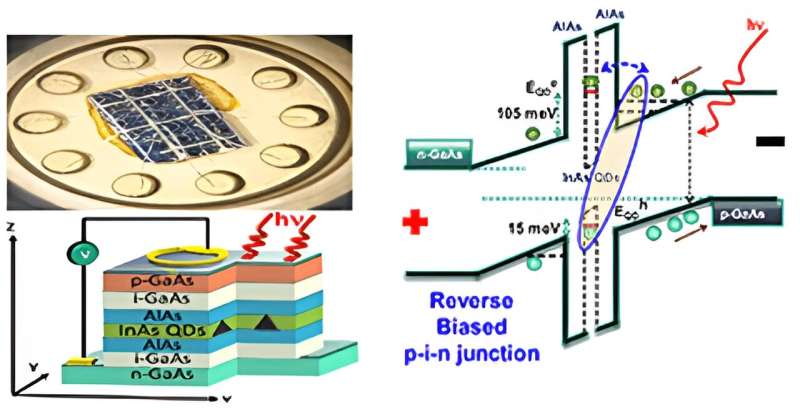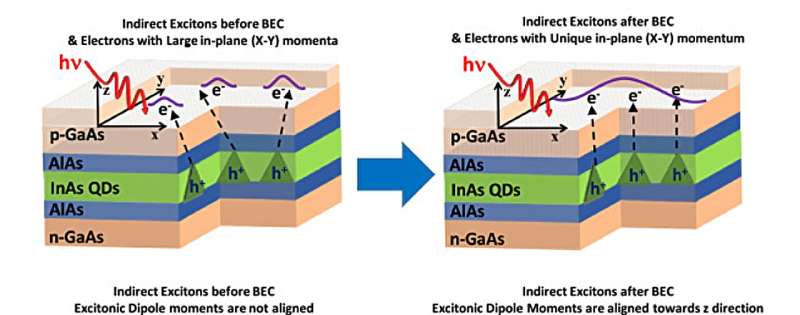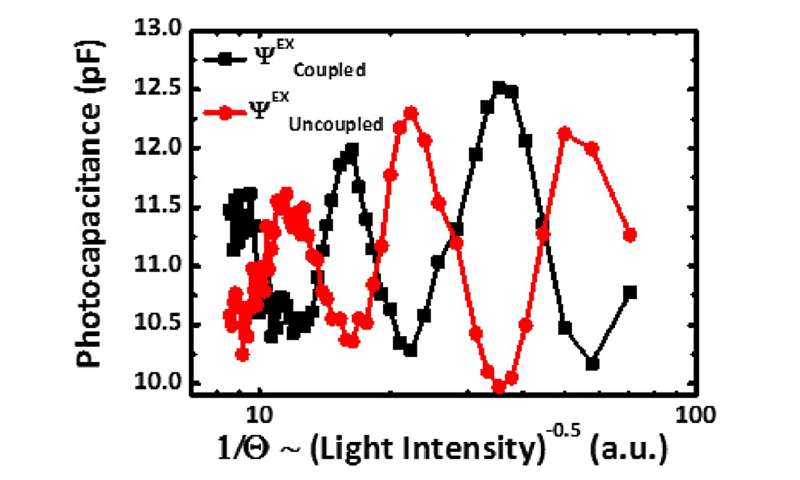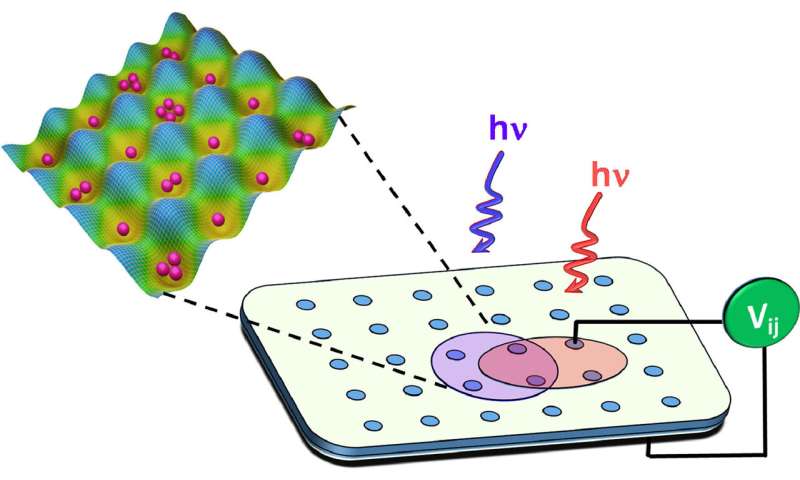July 27, 2023 dialog
This article has been reviewed according to Science X's editorial process and policies. Editors have highlighted the following attributes while ensuring the content's credibility:
fact-checked
trusted source
written by researcher(s)
proofread
Tailoring quantum oscillations of a Bose-Einstein condensate of excitons as qubits

What plagues quantum upscaling? Most quantum computing devices are dependent on using complex physical phenomena that are either very short-lived (~10-12 seconds) and/or only survive at ultra-low temperatures (e.g., 10-3 to 10-6 Kelvin) and/or require ultra-high vacuum environments, except possibly those using nitrogen vacancy centers in diamonds or color centers in silicon, silicon carbide, etc.
Experimental control of all these phenomena demand challenging experimental infrastructures such as ultra-cold atoms on optical lattices, atomic or ion traps, superconducting Josephson junctions and the use of a single semiconductor quantum dot. Most of these platforms are really difficult to scale up outside the boundaries of a sophisticated research laboratory. Decoherence is another major impediment in building a large quantum register of many qubits using these systems.
An alternative proposal based on experimental control of a Schrodinger's-cat-like macroscopic quantum state of many excitons
Instead of trying to entangle the quantum states of few "individual" qubits coherently in a brick-by-brick manner using bottom-up processes, we proposed a radically different top-down approach for building a large, N-qubit quantum register in our study published in the journal Materials Today Electronics.
This involves the generation and control of macroscopically large, Schrodinger's-cat like, two-level quantum coherent states of Bose-Einstein condensate (BEC) consisting of millions or more "identical" excitons (as bosons) in their quantum ground state using a zero-dimensional-two-dimensional (0D-2D) quantum-coupled heterostructure (Fig. 1).

We used measurement of photo-generated capacitance with macroscopically large ~200-micron-wide electrical contact to detect the "collective" oscillations of electric polarization of these dipolar excitons undergoing BEC. The physical process is schematically depicted in Figure 2. We eventually proposed experimental control of the collective quantum state of dipolar excitons to build an N-qubit quantum register.
Use of such a macroscopically large, superfluid BEC state can also prevent quantum decoherence, which is a major road block in scaling up qubits in many other systems. Moreover, these large N qubits of excitonic BEC can undergo faster quantum gate operations. Current working temperature ranges for observing these phenomena is already within the operational range of cryogenically cooled, commercial supercomputers. The abundant multiplicity of vast numbers of excitonic qubits in the quantum ground state of BEC can also offer better computational capabilities and sufficient redundancy for quantum error corrections.
Experimental details of a two-level quantum state of excitonic BEC and Rabi oscillations involving many quantum dots
Technically speaking, we observed phase-coherent, periodic oscillations of photo-generated capacitance as a function of both applied bias and light intensity over a macroscopically large area. Observations of negative quantum capacitance showed significant Coulomb correlations among these indirect excitons.
Presence of phase coherent resonant tunneling in this 0D-2D quantum structure necessarily demands the momentum space narrowing associated with the onset of BEC of these excitons at certain applied bias voltages. Generation of quantum interference beats even with incoherent white light further confirmed the presence of off-diagonal, long-range order of this excitonic BEC.
-

Figure 3. Rabi oscillations of two-level "macroscopic" quantum states of coupled and uncoupled excitons at 10.5 K involving millions of quantum dots. Such Rabi oscillations were earlier reported only with structures having one single quantum dot only [3]. The observed Rabi oscillations measured with photocapacitance actually indicates "insignificant dephasing" even at this temperature and time scales probed in our steady state photocapacitance measurements. Credit: Materials Today Electronics (2023). DOI: 10.1016/j.mtelec.2023.100039 -

Figure 4. Diagrammatic representation of a quantum register based on excitonic BEC. Credit: Materials Today Electronics (2023). DOI: 10.1016/j.mtelec.2023.100039
At a macroscopically large, two-level, quantum coherent state, the BEC of excitons actively take part in collective Rabi oscillations (Fig. 3). This indicates how these two-level quantum states can be used as excitonic qubits. In addition, periodic variations in optical spectra of excitons measured with a photo-generated capacitance point to Hadamard quantum gate operations of the coupled 0D-2D quantum reservoirs of excitons.
Operational temperatures of these excitonic BEC-based quantum computers can be increased with more densely packed arrangements of quantum dots and/or using excitonic materials having much higher excitonic binding energies. However, fabrications of single crystals of 0D-2D quantum heterostructures using 2D layered materials (e.g., transition metal di-chalcogenides, oxides, perovskites etc.) can be a difficult problem in material science.
However, existing III-V- and/or III-nitride-based semiconductor fabrication technologies can also deliver miniaturized devices for quantum computation. So, our study published in Materials Today Electronics not only brings the physics and technology of Bose-Einstein condensation of excitons within the reach of semiconductor-based optoelectronic chips, but also opens up new experimental investigations of the fundamentals of quantum physics using similar techniques.
In principle, most of DiVincenzo's criteria for universal quantum computation can actually be achieved in this 0D-2D system by localized control of the applied bias and varying photo excitations. Further work is going on to fabricate a full-fledged quantum computer with universal quantum gate operation(s) using excitonic BEC.
This story is part of Science X Dialog, where researchers can report findings from their published research articles. Visit this page for information about ScienceX Dialog and how to participate.
More information: Amit Bhunia et al, 0D-2D heterostructure for making very large quantum registers using 'itinerant' Bose-Einstein condensate of excitons, Materials Today Electronics (2023). DOI: 10.1016/j.mtelec.2023.100039
Provided by Science X



















